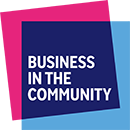The Business Case for Circular Procurement
Adopting a circular approach to procurement allows businesses to become more sustainable while delivering business benefits. This toolkit takes a closer look at some of the product categories organisations should address, gives practical steps on how to implement the principles in your business and makes the business case for doing so.
This toolkit has been written by the global energy and environmental consultancy Ricardo Energy & Environment, members of Business in the Community’s (BITC) Circular Economy Taskforce.
BITC is a partner in the ProCirc project. This is an EU funded project from Interreg, to fund and test circular economy pilots and procurement practices to tackle the issue of raw material waste, and CO2 emissions.
The business case for circular procurement
In a circular economy materials and resources are kept in use for as long as possible, at as high a value use as possible.
Procurement is one of the major levers with a role to play in the transition to a circular economy. Circular procurement is all about making the right choices throughout the procurement process to enable, encourage and enforce circular business model decisions throughout your supply chain. It can drive the decision making and purchasing process to bring benefits across the triple bottom line categories:
- Environmental benefits, for example through reducing carbon emissions and waste.
- Financial and commercial benefits, including through reducing purchasing costs and avoiding unnecessary procurement costs and time.
- Social benefits, such as supporting sectors often led by small businesses or third sector organisations. It could also mean tackling barriers to employment through skills development and employment of traditionally marginalised people.
Read The Business Case for Circular Procurement to learn more.
TURN THE BIGGEST CHALLENGE FACING HUMANITY
INTO ITS GREATEST ACHIEVEMENT
Business in the Community’s work on the circular economy
The circular economy offers an alternative way of using resources to a traditional, linear economy. Resources are designed for longer lifetimes, repair, re-use and reprocessing. We need to redesign how resources are used to achieve a net zero carbon economy.
BITC is accelerating the transition to a circular economy and improving resource productivity.
Learn more about BITC’s work on the circular economy.

CLIMATE ACTION: THE TIME IS NOW

